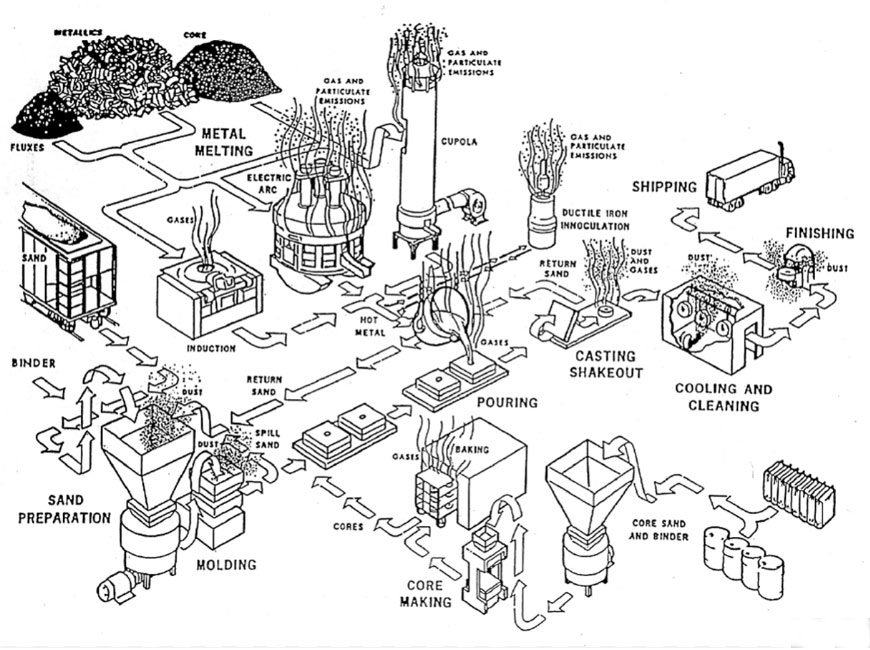Overcoming challenges in sand casting parts production requires careful planning, attention to detail, and the implementation of effective techniques. Here are some tips and techniques to address common challenges in sand casting:

1. Design Optimization:
- Optimize part designs to simplify the casting process and minimize the risk of defects.
- Avoid sharp corners, thin sections, and complex geometries that can lead to issues like sand erosion or metal shrinkage.
2. Proper Gating and Risering:
- Design an efficient gating system to ensure proper metal flow into the mold cavity and reduce the risk of defects like porosity.
- Use risers (feeders) strategically to compensate for metal shrinkage during solidification.
3. Proper Sand Mix Design:
- Develop a suitable sand mix design with the right combination of sand, binder, and additives to ensure good mold strength and collapsibility.
- Regularly test and adjust the sand mix to maintain consistency.
4. Mold Preparation and Venting:
- Ensure the proper compaction and venting of the sand mold to prevent defects like gas porosity and metal penetration.
- Use venting channels to allow trapped gases to escape during metal pouring.
5. Meticulous Metal Pouring:
- Employ experienced operators for metal pouring to ensure precise control of the pouring temperature and speed.
- Maintain a consistent pouring rate to avoid cold shuts or other casting defects.
6. Heat Treatment and Post-Casting Processes:
- Use heat treatment and other post-casting processes to enhance material properties and address potential casting defects.
- Employ stress-relief techniques to minimize distortion and improve dimensional stability.
7. Quality Control and Inspection:
- Implement comprehensive quality control procedures to detect defects and ensure adherence to specifications.
- Utilize non-destructive testing methods such as X-ray, ultrasonic, or magnetic particle inspection to verify part integrity.
8. Process Monitoring and Automation:
- Implement process monitoring and automation techniques to ensure consistency and repeatability in production.
- Modern technologies like real-time sensors and machine learning can help detect process variations and optimize parameters.
9. Continuous Training and Skill Development:
- Regularly train and update the skills of the casting team to improve their knowledge and understanding of the process.
- Foster a culture of continuous improvement to identify and address challenges proactively.
10. Collaboration and Communication:
- Foster open communication and collaboration between designers, engineers, and foundry personnel to address challenges collectively.
- Share feedback and lessons learned to implement improvements in future casting projects.
By following these tips and techniques, manufacturers can effectively overcome challenges in sand casting parts production, leading to higher-quality components, reduced waste, and increased efficiency in the overall manufacturing process.
